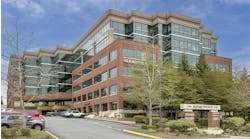Phoenix — The Phoenix Convention Center at Copper Square in the heart of downtown Phoenix is in the midst of a $600 million expansion. Surrounded by shops, restaurants, premier hotels and sports venues such as the U.S. Airways Center and Chase Field, the center is aiming to become one of the world's finest large convention venues.
The expansion has been years in the planning, and is currently in phase two, meaning it is open for business while the renovations continue. All key facilities should be operable by January 2009, and just in time; the National Rifle Association is coming in May of that year with an estimated 60,000 delegates. The increase in floor size to nearly 900,000-sq.ft. will make it one of the country's 20 largest convention facilities — quite a step up from being 67th, which is where it ranked before the expansion.
With the completion of the second phase, managers hope to have it certified by the U.S. Green Building Council as having met LEED standards as a fully sustainable facility, based chiefly on use of renewable materials, energy efficiency, continuous IAQ, water conservation (an important topic in Arizona), recycling programs and the use of eco-friendly chemicals for cleaning and maintenance.
“It think it will definitely be an added incentive to many groups that the facility is a green building,” said Douglas MacKenzie, spokesman for the Greater Phoenix Convention and Visitors Bureau.
Phoenix-based Interstate Mechanical Corp., or IMCOR, a 400+ employee commercial and industrial mechanical contractor, was brought in to do all the key phase one and phase two plumbing, piping, HVAC and hydronic installations. During phase one work, IMCOR crews installed 10 high-efficiency Rheos+ boilers built by Laars Heating Systems, a subsidiary of Bradford White.
“Each of the 10 Rheos+ boilers were 2.0 million Btuh in size, for a total heat load of 20 million Btuh,” said Victor Rilling, president of The Mechanical Room, a manufacturer's rep firm that helped specify the boilers.
The boilers feature variable modulation between 100% and 25% of the input rate, and are able to deliver up to 96% thermal efficiency — all while emitting NOx levels of less than 10 ppm and low CO emissions.
The boilers feed 58,000 linear feet of carbon steel and copper heating water piping.
According to Dan Brown, IMCOR's project manager for the job, “From the boilers it's 800 ft. to the newly-renovated South Hall where the boilers are heating 145,000-sq.ft. of space through air handlers, coils and VAVs. The other building, 300 ft. from the West Hall where the boilers are, is the Phoenix Symphony Hall where we provide for 90,000-sq.ft. of heated space.”
In the West Hall alone are 22 air handlers, 178 VAV boxes and 81 fan coil units, most of which require heating, although during summer months some will only carry chilled water.
One of the challenges IMCOR faced was how to configure the multiple boilers' exhaust flue.
“We manifolded all the boilers into two exhaust headers, each with five boilers, all of them connected to a computerized draft control system,” said Brown. “This allowed us to carry exhaust through the roof in just two locations, discharging into VFD-driven chimney fans, minimizing the need for multiple penetrations.”
The boilers operated in a lead-lag arrangement, each running for a set number of hours before it cycles off as another comes online. When demand increases, boilers activate one at a time until heating needs are met.
“We haven't yet seen a situation where all boilers were on at the same time,” said Brown, “although it's possible. In most instances a few of the systems — somewhere between four and six — are operating simultaneously.”
The set-up naturally delivers the redundancy the convention center requires.
Moving all that hot water is an array of Grundfos TP 80-160/2 circulators. IMCOR favors the circulators for their reliable wet-rotor design.
LEED certification is still a distinction for convention centers. To date only three existing venues in the U.S. are LEED-certified: the David L. Lawrence Convention Center in Pittsburgh, the Oregon Convention Center in Portland, Ore., and the Spokane Convention Center in Spokane, Wash.

